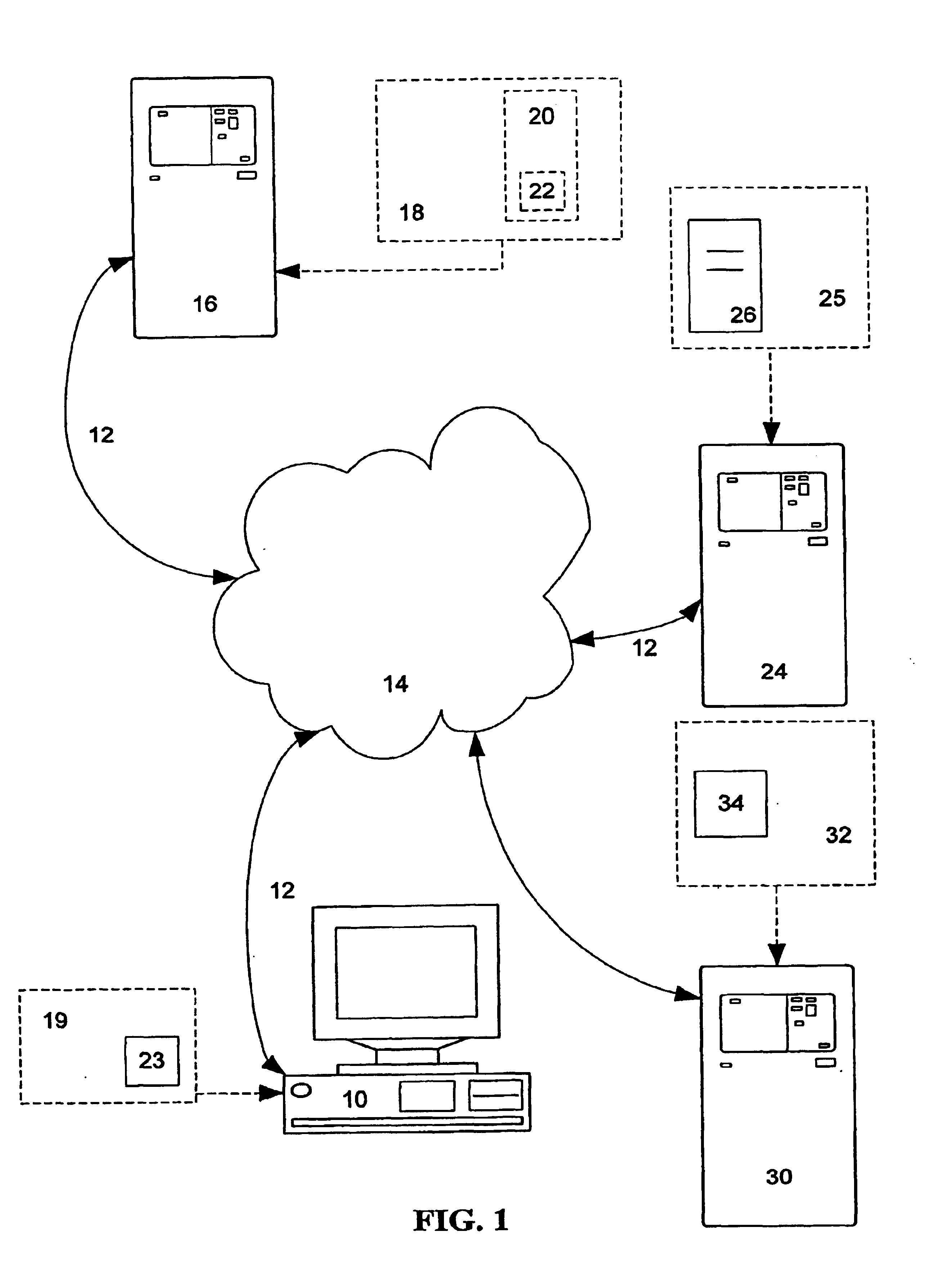System and method for installing an auditable secure network
a secure network and software technology, applied in the direction of program control, unauthorized memory use protection, instruments, etc., can solve the problems of software producers wasting substantial revenues and valuable information about their customer base and potential markets, preventing software vendors from exploiting the non-traditional distribution, etc., to achieve the effect of short tim
- Summary
- Abstract
- Description
- Claims
- Application Information
AI Technical Summary
Benefits of technology
Problems solved by technology
Method used
Image
Examples
Embodiment Construction
[0052]While the present invention retains utility within a wide variety of networks and may be embodied in several different forms, it is advantageously employed in connection with the Internet. Though this is the form of the preferred embodiment and will be described as such, this embodiment should be considered illustrative and not restrictive.
[0053]Referring now to FIG. 1, a remote computer 10 is shown having an electrical connection 12 to a network 14. The remote computer 10 can be a personal computer, such as an IBM compatible or a MAC, can be a work station, or any other such computer that is adapted to communicate over a network 14. The electrical connection 12 is used generically to indicate a physical connection to a client / server network. Though such a connection can take any of various forms and use any of numerous protocols, in the preferred embodiment communication via the electrical connection 12 uses Transfer Control Protocol / Internet Protocol (“TCP / IP”). TCP / IP is pr...
PUM
 Login to View More
Login to View More Abstract
Description
Claims
Application Information
 Login to View More
Login to View More - R&D
- Intellectual Property
- Life Sciences
- Materials
- Tech Scout
- Unparalleled Data Quality
- Higher Quality Content
- 60% Fewer Hallucinations
Browse by: Latest US Patents, China's latest patents, Technical Efficacy Thesaurus, Application Domain, Technology Topic, Popular Technical Reports.
© 2025 PatSnap. All rights reserved.Legal|Privacy policy|Modern Slavery Act Transparency Statement|Sitemap|About US| Contact US: help@patsnap.com



